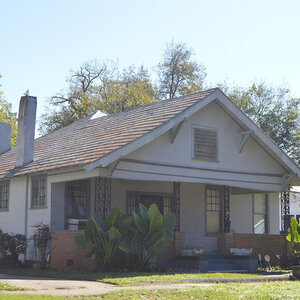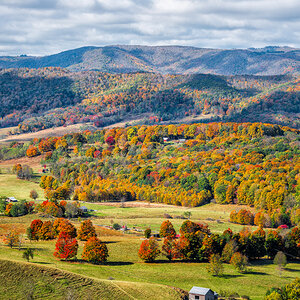At Canaan's Edge: America in the King Years, 1965-68
The notion that the sixties were, if not the end, then the beginning of the end of civilization has been an article of faith among conservatives for decades. Frequently absent from those critiques is any acknowledgement that the decade's excesses were a small price to pay for the progress made during those years toward fulfilling America's founding ideals: That all men are created equal, that they are endowed with unalienable rights, and that among them are life, liberty, and the pursuit of happiness.
As the decade opened, the reality for tens of millions of Americans — African Americans especially — was very different. A hundred years after the Civil War ended slavery in the United States, most African Americans suffered under a form of racial apartheid — enforced by the Ku Klux Klan in the South, prevalent everywhere — that denied them basic rights of citizenship, tolerated segregation in housing, education, and public transportation, and discriminated against people of color at almost every turn. By 1960, the system was under attack — thanks, in part, to a singular act of civil disobedience by a seamstress named Rosa Parks — but its roots in American society ran deep and would stubbornly resist attempts at eradication for the better part of the decade. That the system's legal and extra-legal underpinnings eventually would be dismantled — and Americans' view of race fundamentally altered in the bargain — owed much to the moral courage, eloquence, and determination of one man, Martin Luther King, Jr., and the movement for civil rights he led and inspired.
That story — the story of a great but flawed man who redeemed a great but flawed nation — is the subject of Taylor Branch's monumental three-volume history of the period, America in the King Years, 1954-1968. At Canaan's Edge, the third and final volume in the trilogy, picks up where the previous volumes, the Pulitzer Prize-winning Parting the Waters: America in the King Years, 1954-1963 and Pillar of Fire: America in the King Years, 1963-1965, left off. It's 1965, and the 36-year-old King, winner of the Nobel Peace Prize in 1964 and by then one of the most famous men in the world, stands at yet another crossroads. Behind him are the bitter triumphs of Montgomery, Birmingham, and the 1963 march on Washington ("I have a dream that my four little children will one day live in a nation where they will not be judged by the color of their skin but by the content of their character"). Ahead lies Selma, and the subsequent campaign of protests and mass demonstrations designed to secure voting rights for African Americans in nearby Lowndes County and the rest of Alabama.
But the nonviolent people's movement that King and his Southern Christian Leadership Conference (SCLC) have spearheaded for a decade is beginning to fray under the strain of continual harassment and intimidation. Frustrated by the refusal of Democratic Party leaders at the 1964 convention to unseat an all-white delegation in favor of the Mississippi Freedom Democratic Party, Stokely Carmichael, a key figure in the Student Nonviolent Coordinating Committee (SNCC) and a King ally, openly begins to question the efficacy of nonviolent direct action. Later in the year, he will tell reporters that "Nonviolence is irrelevant. What King has working for him is moral force, but we're building a force to take power. We're not a protest movement." Younger, more militant members of SNCC begin to mock King ("Da Lawd! Da Lawd!") during his sermons to movement faithful. And in the nation's capital, the first U.S. combat troops — the vanguard of a force that will rise to more than 500,000 by 1968 — are dispatched to Vietnam.
Selma, which brings large numbers of whites and blacks together for the first time in the struggle for civil rights, is, Branch writes, "the last great thrust of a movement built on patriotic idealism" — but a Pyrrhic victory for King and the movement. As the months pass, Americans will turn their attention away from that struggle and focus instead on the escalating conflict in Southeast Asia — and the increasingly violent unrest among blacks in cities around the country. In August, President Lyndon Johnson will sign the Voting Rights Act into law. Five days later, following the arrest of a black youth by the California Highway Patrol on drunk-driving charges, the predominately black neighborhood of Watts in Los Angeles will erupt in violence; dozens of people, most of them black, will die and many more will be injured.
With passions high and events moving quickly, King will make a fateful decision to take his brand of peaceful nonviolent "witness" out of the South for the first time. In January 1966, he and Coretta, his long-suffering wife, will move their family into a Chicago tenement apartment. In February, the Pentagon, with President Johnson's approval, will unleash a massive bombing campaign, Operation Rolling Thunder, on North Vietnam. In May, Stokely Carmichael will be named chairman of SNCC and will turn the organization away from nonviolence. In July, King and his SCLC associates (including a young Jesse Jackson) will initiate a series of marches in Chicago to protest discriminatory housing practices in the city; the reception from white Chicagoans — thrown eggs, bottles and bricks, chants of "White power" and "Burn them like Jews!" — will cause a shaken King to tell the press, "I have never in my life seen such hatred. Not in Mississippi or Alabama. This is a terrible thing."
But there will be no backing down. Nine months later, in New York City's Riverside Church, King will give a speech against the Vietnam War that will galvanize opposition to his movement — and hatred of him personally — within the highest levels of the FBI and the federal government. In June, President Johnson will nominate NAACP lawyer Thurgood Marshall to fill a vacancy on the Supreme Court, the first African American so honored. In July, five days of riots, looting, and violence in Newark, New Jersey, will leave 23 people dead, more than 700 injured, and the city in shambles; protests against the war in Vietnam will continue to escalate. In December, having decided that the struggle for civil rights cannot be a truly moral struggle if it ignores violence and injustice perpetrated against any American, regardless of race or ethnicity, King will announce plans to lead a Poor People's Campaign in Washington, D.C., the following spring.
Those plans will be derailed in March when he decides, against the advice of some of his associates, to join a strike by sanitation workers in Memphis, Tennessee. On the evening of April 3, 1968, tired and dispirited, his Gallup approval ratings at an all-time low (36 percent), he will address a smaller-than-anticipated crowd of sanitation workers and local clergy and will end his remarks by telling them: "Like anybody I would like to live a long life — longevity — has its place. But I'm not concerned about that now, I just want to do God's will. And he's allowed me to go up to the mountaintop. And I've looked over. And I have s-e-e-e-e-e-n, the promised land. And I may not get there with you, but I want you to know, tonight that we as a people will get to the promised land! So I'm happy tonight. I'm not worried about anything! I'm not fearing any man! Mine eyes have seen the glo-ry of the coming of the Lord!" The next day, Martin Luther King, Jr., age 39, will be gunned down on the balcony of Memphis' Lorraine Motel by an escaped convict named James Earl Ray.
It's a tragic but, ultimately, inspiring story, and Branch tells it with verve and an affection for his characters that allows us to understand and (for the most part) admire them despite their flaws and missteps. Lyndon Johnson, Robert Kennedy, Andrew Young, Ralph Abernathy, Coretta Scott King, Bayard Rustin, Stokely Carmichael, James Bevel, Julian Bond, Jesse Jackson, J. Edgar Hoover, George Wallace, Harry Belafonte — they're all here, the famous and near-famous, idealists and politicians, leaders and followers, lions and lambs — as a reminder that, at the end of the day, great social movements are not so much led from the top as they are driven from below. But without a vision, without a catalyst, social movements, more often than not, end up in the ditch. That the civil rights movement of the sixties largely succeeded — and did so using tactics and embracing a philosophy that continues to inspire — is Dr. King's legacy to the rest of us. As Branch writes: "King himself upheld nonviolence until he was nearly alone among colleagues weary of sacrifice. To the end, he resisted incitements to violence, cynicism, and tribal retreat. He grasped freedom seen and unseen, rooted in ecumenical faith, sustaining patriotism to brighten the heritage of his country for all people. These treasures abide with lasting promise from America in the King years."
To which one can only add, "Amen."








